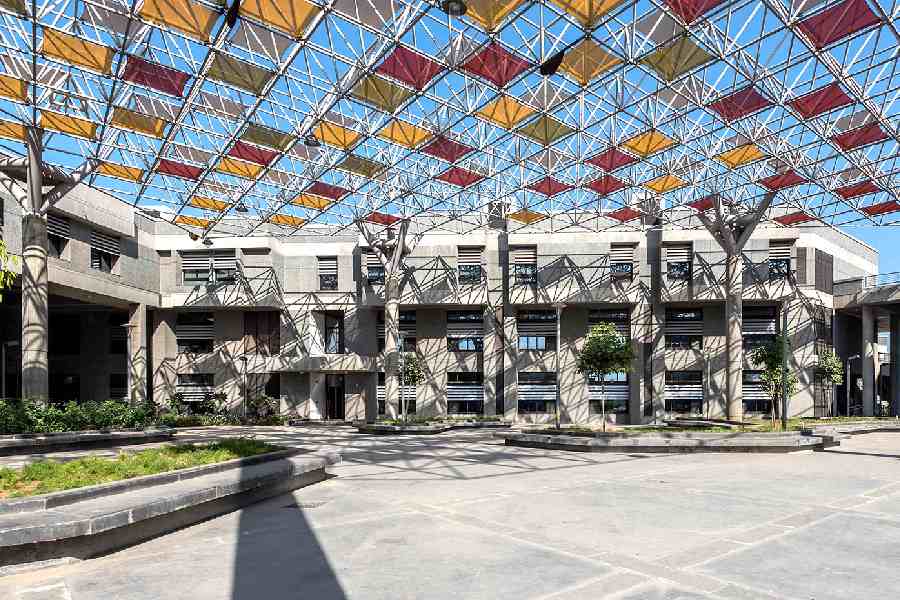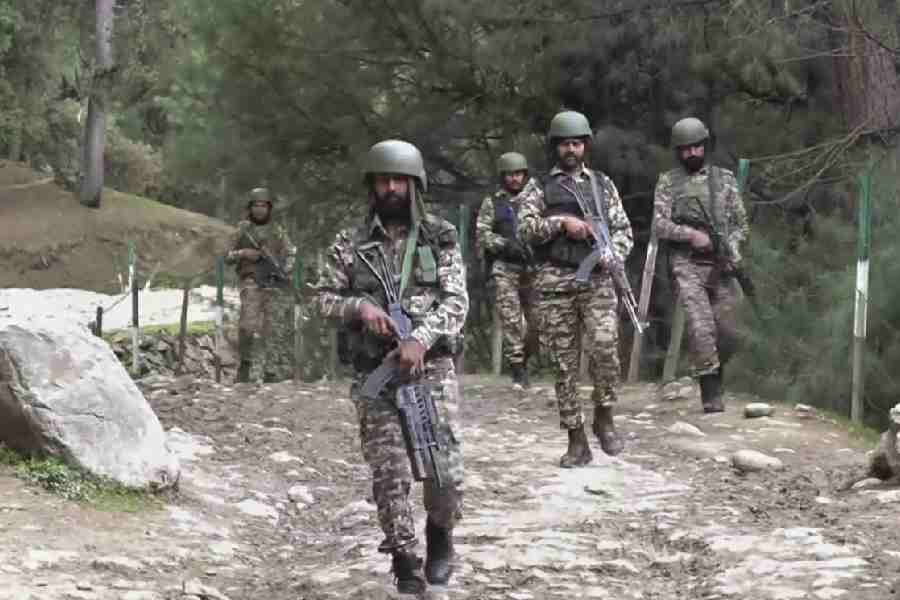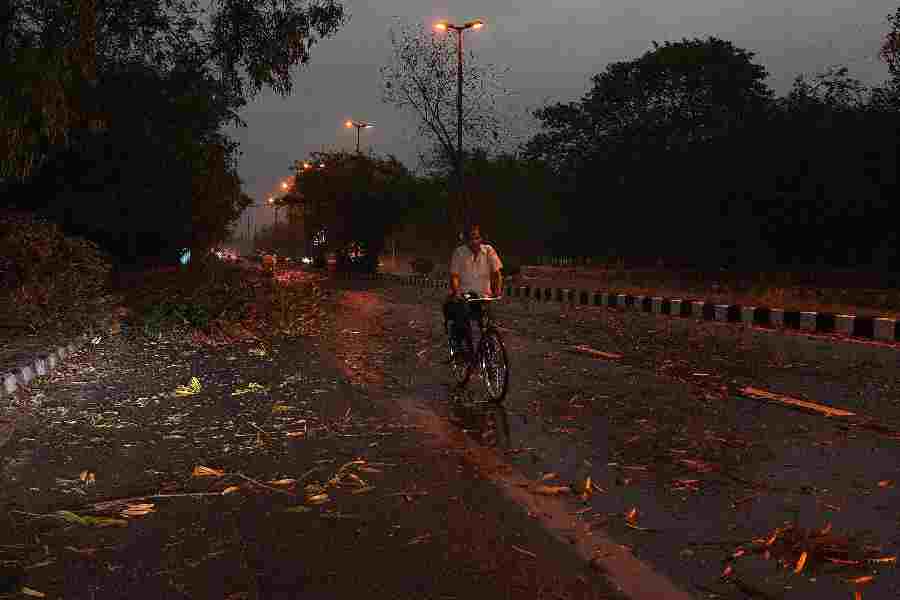 |
As folklore goes, a demon named Ranu Sirdar accosted Kosi, the beautiful perky daughter of the Himalaya, and proposed marriage to her. Out of desperation she placed a condition that Ranu would have to construct overnight an embankment to confine Kosi within the Himalayas — else he would lose his life. The infatuated Ranu got down to work. At midnight, disguised as a rooster, Kosi’s father began to call. Thinking it to be dawn, Ranu ran for his life.
Since then, man has been pitted against the fury of the Kosi.
The Kosi River has wreaked havoc yet again in Bihar. At last count nearly 23 million people have been displaced and rendered homeless.
The Kosi has been playing hopscotch from channel to channel or carving out new channels frequently for ages. Since 1731 the Kosi has changed course 21 times. When a river migrates, it does so gradually. A river like the Kosi does not migrate, it just shifts abruptly, the process being called avulsion.
The river was ‘jacketed’ with embankments in the 1950s near the Indo-Nepal border. Once the embankments were made the Indian government felt that the river had been contained. Strangely, despite its chequered record, the Kosi was taken for granted. Alas, the embankments began giving away. They broke at Dalwa in Nepal(1963), at Darbhanga (1968), Supaul (1971), Saharsa (1980, 1984) and Joginiya (1991). Foxes and rats were blamed by the state government for the breaches and weakening of the embankments.
Why does the Kosi change its course so frequently? There is a geophysical reason for that.
The Indian Plate began to collide with the Asian Plate nearly 55 million years ago. The collision produced the loftiest and the youngest of mountains in the world, the Himalayas. It was not a simple collision. The process continues even now. Geophysicists claim that the Indian Plate is going under the Asian Plate at a rate of five centimetres a year.
The collision of the giants took place in pulses and the last of these occurred 1.5-1.7 million years ago. The compression thus generated threw up the fast rising Siwalik mountains — over the Sindhu-Ganga-Brahmaputra plains — in a series of faults, termed Himalayan Frontal Fault (HFF), says K.S. Valdiya in the October 2003 issue of Current Science.
The HFF has influenced the behaviour of the rivers that cut across the region. The ground is subsiding rapidly in the 180km stretch between the Rapti and the Saptkosi, Valdiya reports. As a result, drainage of the river is impeded and it shifts its course. The Kosi had shifted 112 km from east to west in 277 years. Now it has gone back to the easternmost course once again. The subsidence of the ground has caused this avulsion.
This region is notorious for earthquakes. Two major quakes were recorded in 1883 and 1934. Apart from these, geologists have found signatures of three much more powerful quakes that happened in the ancient past. These occurred 1,700 years, 5,300 years and 25,000 years ago. So powerful were the earthquakes that the sediments were liquefied. What could have happened to the ground slope is anybody’s guess! A recent study points out that as a result of the 1934 earthquake the Kosi Mega Fan — the 180 km long and 150 km wide alluvial fan of the Kosi — tilted westward while the Ganga valley slopes eastward.
When the Himalayan rivers reach the plains, because of a sudden change in their gradient, they dump their load of silt, sand, gravel and boulders, and proceed. These accumulate to form a conical alluvial fan. The Kosi Mega Fan — the world’s largest alluvial fan — with its yearly enrichment is highly fertile and attracts human settlements.
The Kosi river system drains areas as far as Mount Everest. The seven sisters — Sun Kosi, Tam Kosi, Doodh Kosi, Indravati, Likhu, Arun and Tamar — unite to form the Saptkosi in Nepal. The river, cascading down the deep valley, carries in its wake huge quantities of sediments. It cuts across the Siwalik ranges at the Indo-Nepal border. The Siwalik rocks, geologically much younger and hence less consolidated and compact, add to the sediment load of the river. The basement of the Fan is said to be sinking at a rate of one metre every 1,000 years. The Fan is also criss-crossed by major active faults that also have a control over the direction of the channel of the river.
With catchments as high as the Everest, the Kosi drains an area of high rain and snowfall, affecting the hydrology of the river. The rate of rise of the Himalayas in the Kosi catchments is higher than the channel cut by the river. Consequently the river has a higher sediment load. Tectonically the Kosi Mega Fan basement is a disturbed and high seismic zone. All these factors control the Kosi’s behaviour.
In June 2004, Dr A.B. Thapa, an expert on water resources in Nepal, said, “The detention basin upstream of the Kosi barrage near Hanumannagar is going to be full very soon. After that the embankments would be ineffective to prevent the lateral shifting of the Kosi. It is predicted that the Kosi would again take its 1732 course. The farthest position of the new course of the Kosi is expected to be about 120 km away from its present course. The swing of the Kosi River to the east could be sudden and almost unexpected because nobody knows yet when it is going to happen. The people would be completely taken by surprise. So the loss of life could be very high.”
The reasons for the Kosi’s erratic behaviour are amply clear. Constructing embankments may contain the river temporarily. A long-term solution would be to construct dams in all the seven tributaries, in Nepal. It will need diplomatic effort as well as the wills of the governments of both countries.
As the Kosi catchment falls in a high seismic zone, damming will be quite hazardous. But the availability of expertise to construct earthquake-proof dams is the brighter side of the issue.










